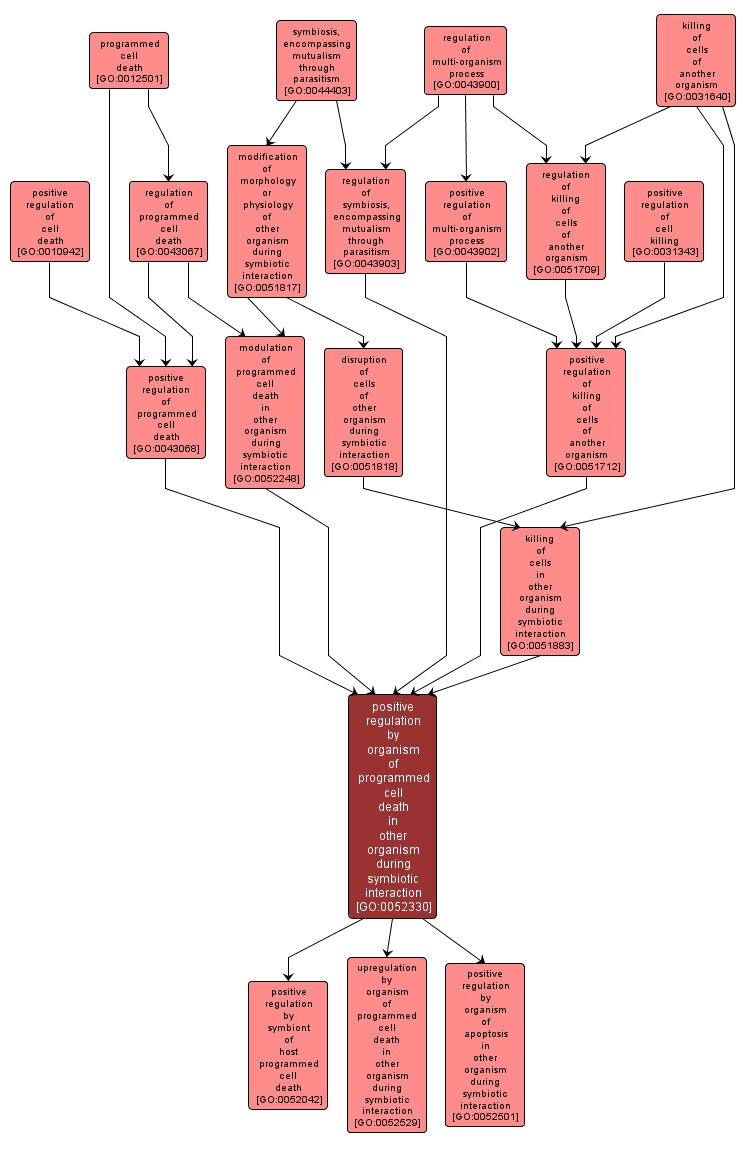GO TERM SUMMARY
|
| Name: |
positive regulation by organism of programmed cell death in other organism during symbiotic interaction |
| Acc: |
GO:0052330 |
| Aspect: |
Biological Process |
| Desc: |
Any process by which an organism activates, maintains or increases the frequency, rate or extent of programmed cell death in a second organism, where the two organisms are in a symbiotic interaction. |
Synonyms:
- stimulation by organism of programmed cell death in other organism during symbiotic interaction
- positive regulation by organism of non-apoptotic programmed cell death in other organism during symbiotic interaction
- GO:0052518
- activation by organism of programmed cell death in other organism during symbiotic interaction
|
|

|
INTERACTIVE GO GRAPH
|














